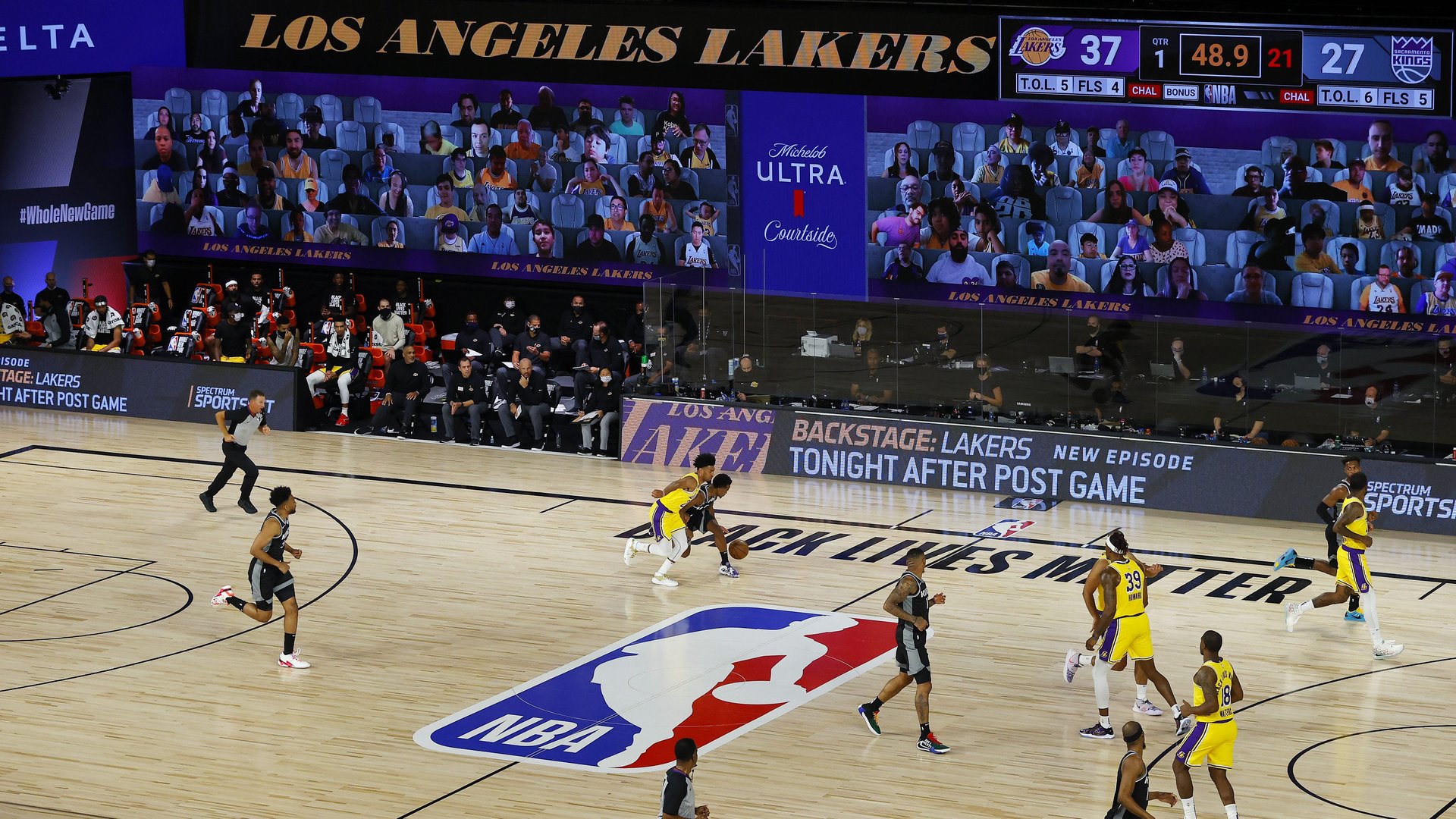How the NBA is using virtual fans to make games feel normal
When the NBA playoffs start on Aug. 15, they’ll be missing one crucial element: home court advantage. All 16 teams that make the postseason will play on the same three courts, sans fans, deep inside a disinfected Disney World fortress known as the bubble.


When the NBA playoffs start on Aug. 15, they’ll be missing one crucial element: home court advantage. All 16 teams that make the postseason will play on the same three courts, sans fans, deep inside a disinfected Disney World fortress known as the bubble.
To give the games some semblance of normalcy—for the players and for fans—the NBA is using every technical trick it can muster.
“We wanted to create an atmosphere that was as similar to a traditional NBA game as we could,” said Sara Zuckert, who took over the league’s Next Gen Telecast department just before the pandemic struck. “Nothing is going to replace 20,000 home fans cheering for their team, but we were looking at all of the opportunities to replicate that in the best possible way digitally.”
Players are having varying degrees of success adapting to their new digs. Superstar Lebron James noted the eeriness of playing consequential games in an empty gym for the first time in his life. And fans have seen the good, the bad, and the downright weird of the new format.
For better or worse, here’s how the NBA is pulling off its technical wizardry.
Virtual fans sign up for the stands
The bubble courts are a sort of pandemic panopticon powered by Microsoft Teams. Seventeen-foot LED screens wrap around the arena, displaying virtual stands populated by the disembodied heads of 300 fans watching at home. To score a “ticket,” fans must sign up for a painfully corporate raffle by taking a picture of a can or bottle from NBA beer sponsor Michelob Ultra.
As in normal NBA games, the broadcast occasionally cuts to shots of celebrities in the stands, including Shaquille O’Neal, Lil Wayne, and a very stressed-out Paul Pierce. To make sure the digital crowd is fit for broadcast, the NBA employs a team of moderators to monitor sections of the stands.
“We really have not—knock on wood—run into any issues,” Zuckert said. Even when a fan brought a goat into the frame, it was remarkably well-behaved.
Canned crowd noise
To mask the weirdness of playing in a silent room, the NBA pipes crowd noise into the arena and the broadcast, mixing audio from the virtual fans in with canned cheers from past games. The league tries to replicate the soundscape of the “home” team’s actual stadium, incorporating the voice of the local PA announcer and music cues specific to each team. Some teams have requested louder crowd noise at the arena for their games, while others have asked the A/V team to cut the music when they have the ball.
To simulate crowd reactions, the league introduced a “tap to cheer” function that allows fans to click a button or tweet a hashtag to raise the volume for their team. A counter displaying the number of digital “cheers” for each team occasionally appears on the broadcast or the arena’s video screens.
The NBA is looking into making this feature permanent to keep its global viewers engaged. “We think it can bring a lot of value to our fans who will never make it to an arena, even when fans here in the states go back to games,” Zuckert said.
Digital logos and ads
Inside the bubble, the teams are playing on three generic courts, bare but for the standard court markings and the words “Black Lives Matter.” But on the broadcasts, viewers see the home team’s logo, as well as ads from their local sponsors, digitally superimposed on the court. Zuckert said it’s a way for the league to recoup some lost marketing revenue and make the courts feel more authentic.
Virtual ads are common in other sports. Soccer broadcasts, for example, have spent years digitally doctoring the ads that appear around the field to appeal to audiences in the country where the match is being shown. But Zuckert said this is the NBA’s first real use of the technology, outside of a few test runs. At times, it shows: The graphics occasionally glitch out as players run across them, absorbing their bodies into a logo.
“This is a strange and unique situation that we’re in,” Zuckert said. “We’re focused on using it as an opportunity for more innovation … but we still do hope to have fans back as soon as possible.”